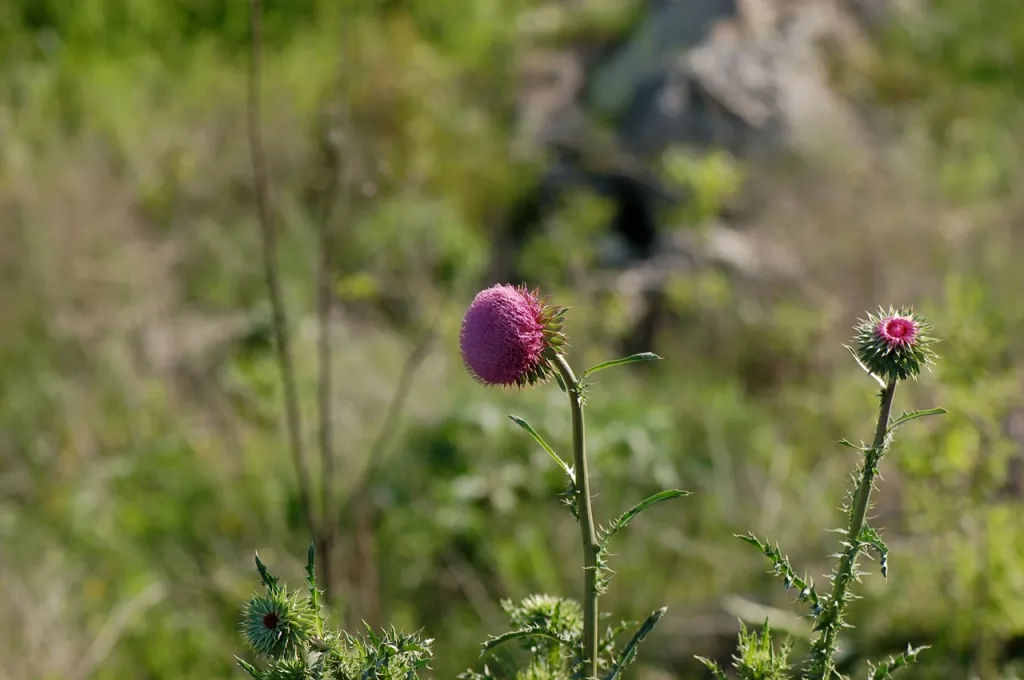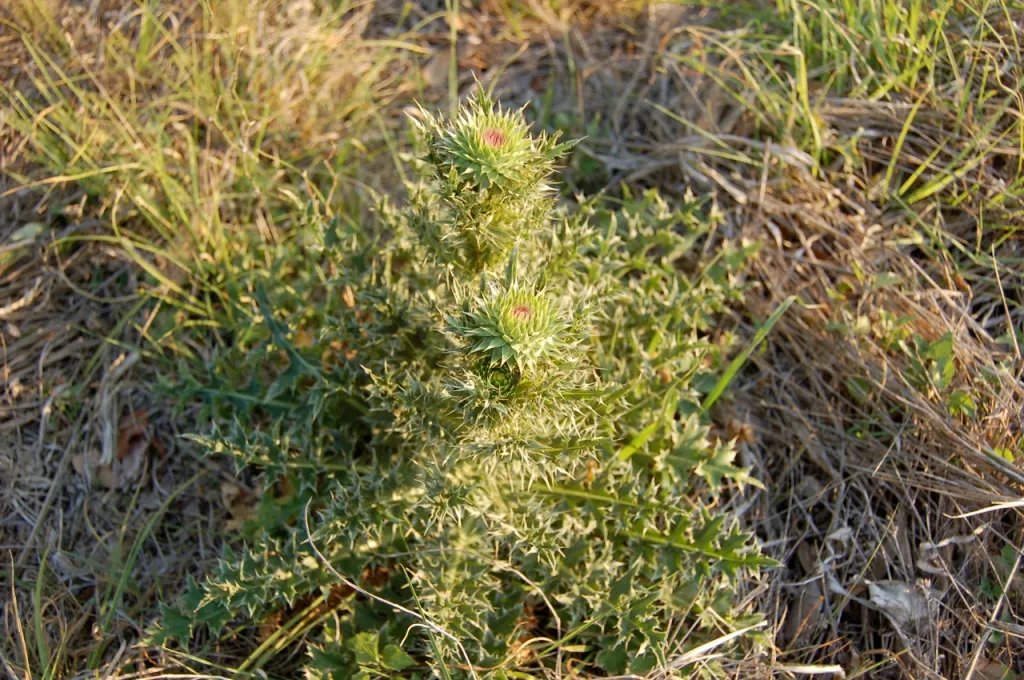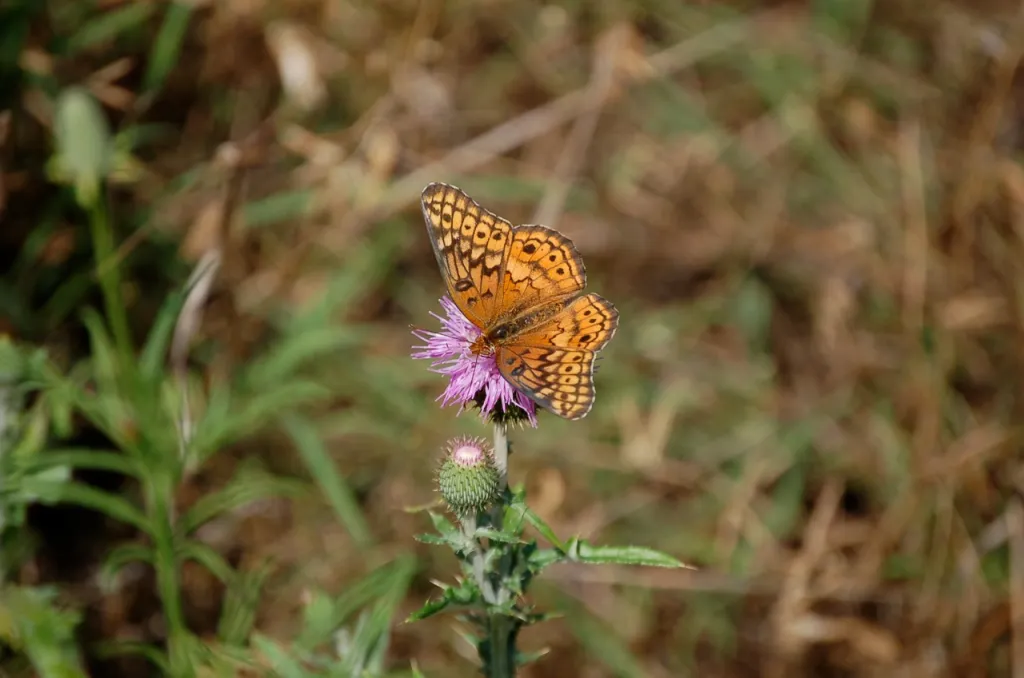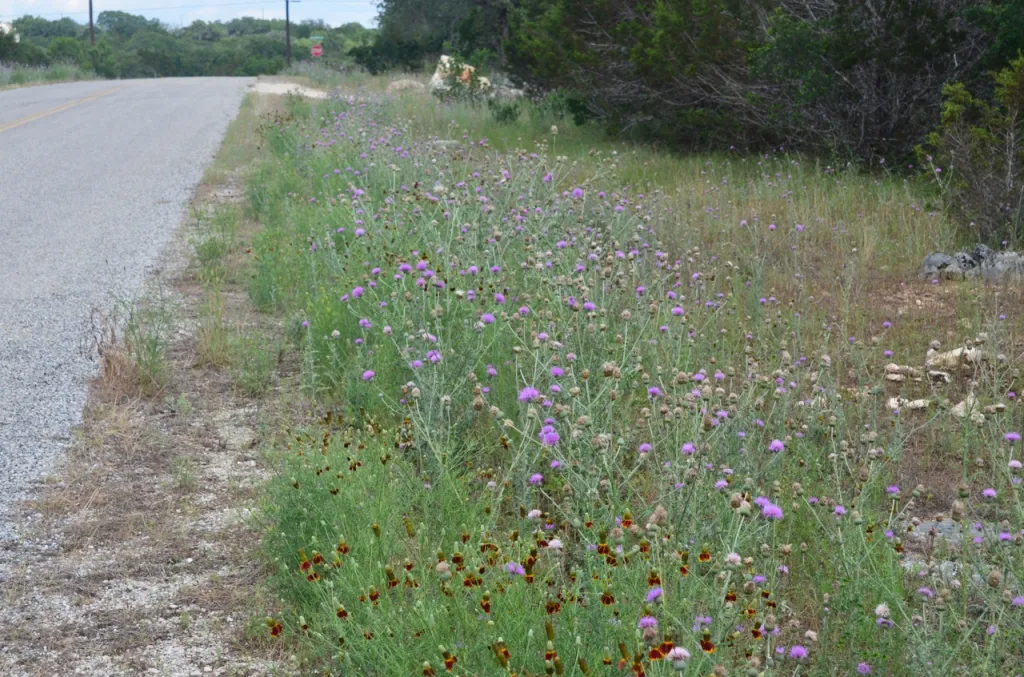By Delmar Cain
Some of our citizens have a way of motivating others. Jan Wrede, naturalist, author, and former research director at the Cibolo Nature Center, does it as well as anyone. Her well founded concern about Malta starthistle has created an educational buzz in the community, inspiring many to start pulling, digging and killing those “Darth Invader” plants. Letting the plants produce their seeds in May is like sowing dragon teeth, each one spawning a new dragon, and she has urged “no mercy”.

If you learn to recognize Malta starthistle, you will see it everywhere. Last week I received an image of a lark sparrow taken by a birder in the Kreutzberg Canyon Natural Area, a nice new facility owned by Kendall County. Surrounding the lark sparrow were the unmistakable spiny seed heads of a Malta starthistle. This is definitely not a plant that we want to spread into our parks and natural areas.
The welcome rains this spring, so beneficial to the Malta starthistle, also created excellent growing conditions for other thistles. I have heard more than one homeowner complain about the unruly stands of tall purple thistle that suddenly seemed to take over large portions of his/her yard. An easy solution might be to eliminate all thistles. However, in my opinion that would be like “throwing out the baby with the bath water.”

As I have noted before we do have two tall purple thistle species that grow in Kendall County. One is the native Texas thistle and the other is the invasive musk thistle. Before you eliminate all the thistles in your yard I hope that you will consider that there may be reasons to leave, if not all, at least a few individual plants of the friendly one.
The nodding plumeless thistle or musk thistle (Carduus nutans) is an introduced invasive broadleaf plant, which is native to Europe, Siberia, Asia Minor and Africa. First introduced into Pennsylvania in 1852, it has now spread to all but four states in the United States and to most of Canada. It is listed as a noxious weed in more than twenty-five states in this country, including in Pennsylvania, where it was first introduced, and in three of our neighbor state, Arkansas, New Mexico and Oklahoma.
It was first reported in Texas in 1940.
According to a Kansas State Research and Extension brochure, the musk thistle is a biennial or winter annual, which emerges from seed when the soil has adequate moisture and when the temperatures are between 59 and 86 degrees F. For much of the year it is a spiny rosette with coarsely lobed hairless leaves and a silver-gray leaf margin. But in April and May the stem shoots up (bolts), some to a height of six feet. The rose-purple flower head, resembling a powder puff, will begin seed dispersal in 7 to 10 days after blooming. A single plant may produce 10,000 seeds, which may remain viable in the soil for 10 or more years.

The other purple thistle is the Texas thistle (Cirsium texanum), a spiny biennial or perennial native to the states of Texas, Oklahoma and Missouri. Even though it is native to the United States it obviously is not as well traveled nor has it been as offensive as the musk thistle. It is listed as a noxious weed in only Arkansas and Iowa.
The Texas thistle, which can grow to a height of 2-5 feet, branches at the top with a single flower forming at the end of each branch. Its numerous leaves which can be 4-9 inches long are green on the top, white below with a somewhat wooly texture on the underneath side. The purple or pink-lavender flower at the top of each branch slowly emerges until it looks like a 1 to 1 1/2 inch ball resting on a green prickly cup-like base. Its shape resembles a small colorful fluffy shaving brush and at its peak each disk flower in the cup appears to have a small light-colored tip that glistens in the sun.

Unlike the musk thistle, the Texas thistle is not nearly so aggressive and is not trying to take over the world. But besides being easily controlled, its real benefit is that it fits so well in the ecosystem. During the day I have watched numerous species of bees and butterflies, including monarchs, stop by for a visit on its fragrant blooms. At night when I walk my dog I see that moths, including the white-lined sphinx moth, are visiting it as though it were a popular night diner. The plant is a host plant for the Painted Lady butterfly. When the blooms have faded the lesser goldfinches always prefer the thistle seed to the nyjer seed in my bird feeder.
If you do have to remove either the musk thistle or some of the Texas thistle, by all means remove all the heads before the seeds drop. The plants can be chopped or pulled, but the seed heads should be bagged just like the Malta starthistle. Herbicides can be used in the early part of the year, but they will not be effective if the plants have developed seeds. For infestations on larger areas such as rangelands, The Department of Entomology at Texas A&M University has recommendations for biological control of musk thistle on a website, which can be viewed at: http://bc4weeds.tamu.edu/weeds/rangeland/musk-thistle/
But please think before you chop. You will do yourself and your wild visitors a favor, if you leave some of the Texas thistle.
